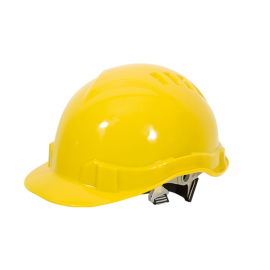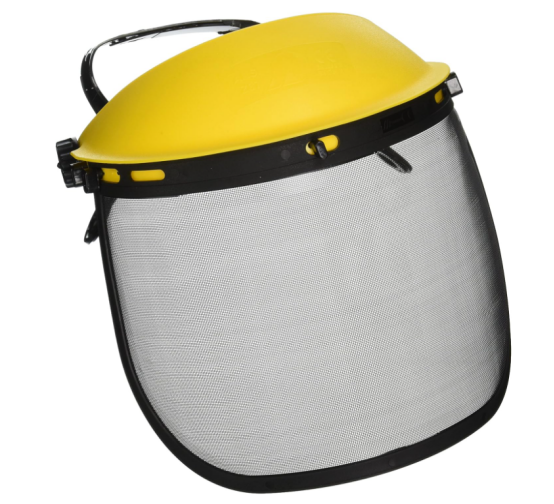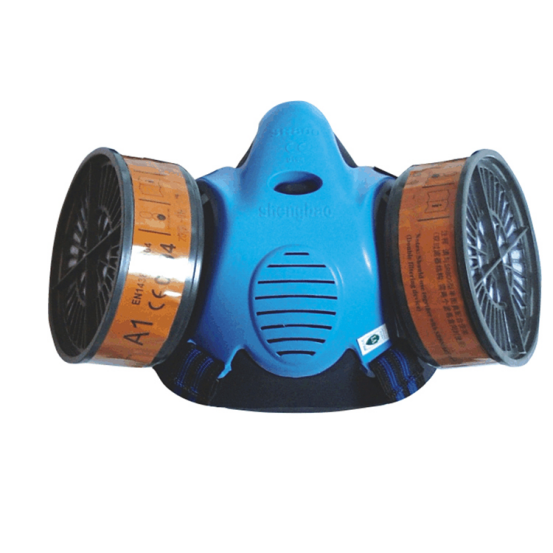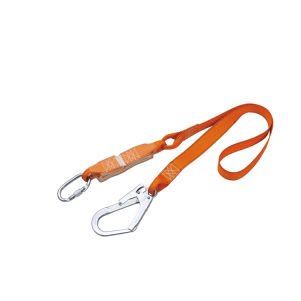As one of the China’s leading PPE manufacturers since 2009, we would like to share the best safety products for construction workers. First of all, we must realize the importance of safety products for construction sites.
As we all know, PPE comes out for safety. PPE are popular because they can help prevent workplace injuries and fatalities, avoid long-term health issues, boost worker confidence and productivity and reduce costs from accidents and downtime. Moreover, governments and regulatory bodies also are strict about the use of PPE in construction.
Construction site, as one of the most dangerous working place often comes with falling objects, sharp materials, heavy machinery, loud noise and operation in high sky. The Bureau of Labor Statistics reported 5,190 fatal work injuries in the U.S. in 2021. Of those deaths, nearly 20% occurred in construction, second only to transportation and materials handling. So PPE is indeed essential in construction to protect workers from immediate and long-term hazards, comply with regulations, reduce costs, and create a safe working environment. Below is a lists of best safety products recommended for construction workers.
1. Head Protection: Hard Hats
Hard hats, also known as safety helmets are one of the most popupar safety products for construction workers for protection from any falling objects. Also the 6-points suspension safety helmets often come with many bright colors (yellow, red, blue, white and etc.) to increase visibility for better safety on construction sites. There are three types of hard hats – Class G (general 2200 volts), Class E (electrical 20000 volts) and Class C (conductive), in which Class C is the most commonly used by ordinary workers for comfort and against impact. In construction tasks of electricity, workers shall wear Class E and Class G hard hats against dangers from high voltage.
Mainly, the hard hats can be made in two plastic materials: cost-effective PE and more expensive ABS. Lightweight PE helmets are more resistant to chemicals like acid and alkalis; ABS helmets are more impact-resistant and of higher melting point than PE, making it more suitable for working in high-temperature environments.
To sum up, for light-duty, comfort, and chemical resistance: A PE helmet is a good choice; for high-impact protection, durability, and heat resistance, go with an ABS helmet.




2. Eye and Face Protection
Wearing safety glasses is an effective safety product to protect eyes from dust, flying debris, splinters, chemicals, and other materials on construction sites. In winter, the safety glasses will work better if anti-fog and anti-scratch treatment are done for durable and fog-free lenses ; in summer, we suggest the safety glasses equipped with scratch-resistant lenses for better durability. Also we strongly recommend to use the right color for lenses, like clear lenses indoor and gray lenses outdoor.
For full-face protection, face shield is a must in tasks like grinding, cutting, welding, metalwork, demolition, masonry work, woodworking and tasks involving chemical or cleaning agents. Face shields can be categorized into 3 types: clear PC/PVC face shields, shaded face shields (welding masks) , mesh face shields. The mesh face shields are mainly used in landscaping or forestry where visibility is needed, and protection is primarily from large debris.

3. Hearing Protection
Ear plugs or earmuffs can be useful for noise reduction. Jackhammers, chainsaws, or pneumatic drills are all loud noise makers. Noises are also unavoidable in the tasks like blasting or heavy demolition, drilling, cutting, and grinding. Choose the right safety products for hearing protection and pay attention to the material in case of any allergies.
4. Respiratory Protection
Respiratory protection on construction sites is to protect workers from inhaling harmful substances. Dust, fumes, gases, and vapors can lead to serious health problems, including respiratory diseases, lung damage, and even cancer. Below are 2 types of respiratory protection for construction sites.
Disposable dust masks
It’s product, a safety product, inexpensive and easy to wear to protect construction workers from non-toxic dust, sawdust, and general airborne particles. And it’s not suitable for protection against fumes, gases, or vapors.


Half-face respirators
The half-face respirators are equipped with replaceable filters and cover the nose and mouth to protect people against dust, gases, vapors and fumes. They are much more expensive than disposable dust masks but offer much higher protection, especially for gases and vapors.

5. Hand Protection: Safety Gloves
Safety gloves protect workers’ hands from various hazards, including cuts, abrasions, chemical exposure, and impacts. Below is a guide on how to choose the right safety gloves.
Leather gloves are made of strong and abrasion-resistant cowhide, ideal for handling rough materials, operating machinery, and welding. They can protect workers’ hands effectively from cuts, scrapes, and abrasions in handling handling bricks, wood and metal. Also the leather gloves can be lined with Kevlar for better cut resistance. Besides, the leather itself is heat resistance. So they are also widely used in welding tasks.
Cost-effective latex coated gloves are breathable, flexible, cut resistant and water resistant. It’s also a good choice to handle slippery materials like bricks, wood, or metal for long time work without sweaty hands. But do remember that latex can degrade over time when exposed to oil and chemicals.
Nitrile coated gloves are best for oily, greasy, or chemical environments, while latex or leather gloves might break down. Besides, Nitrile offers better protection against cuts, punctures, and abrasions than latex or vinyl. So it is also suitable for handling sharp materials like metal, glass, or rough surfaces at construction sites, although it is not so cost-effective. Moreover, Unlike latex, nitrile is hypoallergenic. So it can be an alternative for workers, who are sensitive to latex materials.
PU coated gloves is excellent for its flexibility. Workers can use the gloves in electrical work and carpentry, but cannot be used for handling rough materials or oily and greasy things.
Cotton or cotton blend yarn gloves are also widely used, because of its low costs, good breathability, excellent flexibility, and fantastic durability. But do keep in mind that the gloves are not for wet environments.
6. Foot Protection: Safety Boots
· Steel Toe Boots:
These are the classic work boots, providing maximum impact protection for heavy-duty work environments where there’s a risk of falling or heavy objects.
· Composite Toe Boots:
Ideal for workers who need toe protection but also want a lighter boot, especially for long workdays. Composite boots are also suitable for environments where metal detectors are used (e.g., airports).
· Heat and Abrasion Resistance:
The boots should be able to handle abrasive surfaces and high temperatures if the construction involves hot materials like asphalt or metalwork.
· Slip-resistant Boots:
The outsole is the most important part of the boot for slip resistance. Look for boots with deep, multi-directional treads that improve grip on slippery surfaces like mud, water, or oil.
· Oil and Chemical Resistance:
If the site involves oils, greases, or chemicals, choose boots with oil-resistant soles that prevent the material from degrading while maintaining traction.
· Waterproofing:
Construction sites often involve working in wet environments, so waterproof boots will not only help with slip resistance but also keep your feet dry and comfortable.
· Electrical Hazard (EH) Boots:
These boots are designed to protect against electric shocks. They are mandatory for workers who deal with live wires or electrical equipment.
· Rubber or PVC Boots:
These waterproof boots are used in wet or muddy conditions, often equipped with steel toe caps for added protection. They are great for working in environments with chemicals or water hazards.
Be aware that the features of the safety boots could be combined due to the complex situation at the construction sites.
7. Fall Protection Gear
· Full-Body Harness is to distribute the force of a fall across the body, reducing the risk of injury by supporting the worker’s torso, legs, and shoulders.
Features:
- D-Ring: Located on the back, this is the primary attachment point for lanyards or lifelines.
- Leg Straps: These secure the harness to the legs, ensuring the harness stays in place.
- Chest Straps: Help keep the harness snug and prevent the worker from slipping out during a fall.
- Shoulder Straps: Connect the harness and distribute the weight of the body in the event of a fall.
- Adjustable Buckles: Allow for a customized fit to ensure comfort and effectiveness.


· Lanyards is a short, flexible rope or strap that connects the harness to an anchor point.
Types:
- Shock-Absorbing Lanyards: These are equipped with an energy-absorbing mechanism that reduces the impact force during a fall.

- Non-Shock Lanyards: Used for positioning but not for fall arrest; these are generally for controlled access to specific work areas.

8. High-Visibility Clothing
- Reflective Vests: For increased visibility, especially in low-light or traffic areas
- High-Visibility Jackets: Weatherproof options for colder conditions
- ANSI/ISEA Standards: Ensuring compliance with visibility safety regulations


9. Body Protection: Coveralls and Protective Clothing
- Flame-Resistant Clothing: For work near open flames or electrical hazards
- Cut-Resistant Suits: For tasks with a high risk of cuts and abrasions
- Weatherproof Gear: Rain suits and insulated jackets for all-weather protection
Conclusion
Select the proper safety products to decrease the risks at construction site as much as possible. Any doubts, pls feel free to reach us for more details on PPE items.


